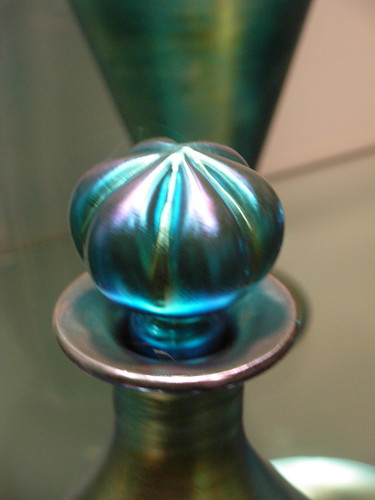
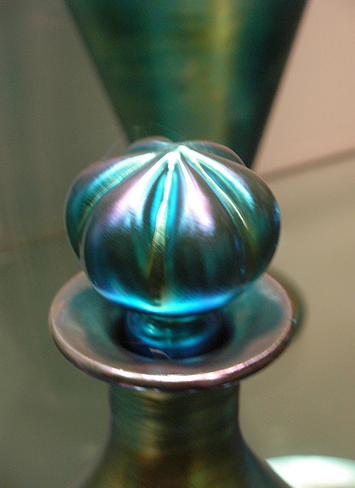
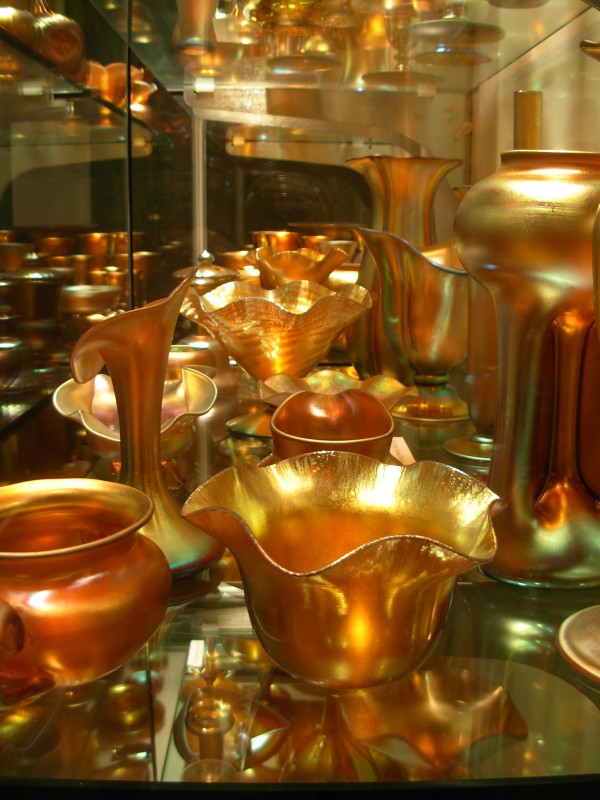
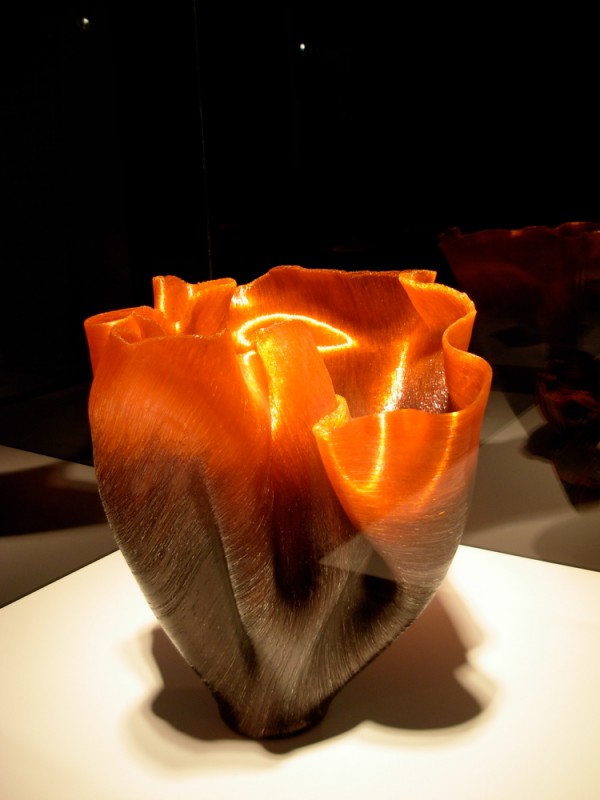
In 2011, Stratoz and I went to the Rochester Jazz Festival on vacation, and maybe this is why I at first when I saw this sculpture at the Corning Museum of Glass(CMOG) on our way back from the festival, I assumed the artist was a man. The name is Toots Zynsky, and I immediately thought of Toots Thielmans, Belgian jazz harmonica player.
But then, as I was looking at this amazing glass vessel, Incantatrice(Sorceress), I heard a woman’s voice emanating from the video monitor, describing her work with glass threads, filet de verre. It makes me happy to discover another woman who is making art with a passion and innovation. She helped create a machine to pull glass threads, and then evolved a technique of laying the threads in a pattern, putting them in a kiln, and finally squeezing the hot glass to get her undulating vessels.
Zynsky was part of the beginnings of the Studio Glass movement in the US, and studied with Dale Chihuly in the 1970’s. Using glass as a medium for art was new territory in the modern art world. As Zynsky says in her bio on the CMOG site:
Glassmaking was wide open. . . Hot glass slipped through the air, pulled and stretched. There was music and the furnaces were roaring. . . and everyone was working in concert. . . It was this material that hadn’t been widely explored as an artist’s medium. Everything was possible, and there was so much to be discovered. There were no rules. You could do anything you wanted.
The first words I heard from Toots Zynga were, “When I hear music, it translates into color.” A musician of color, and a wonderful way to follow the Rochester Jazz Festival. Check out this video to see her at work:
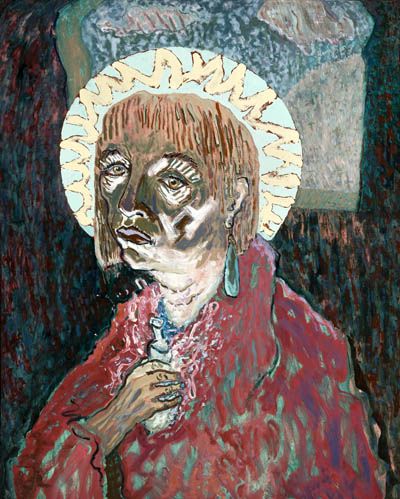
I had the opportunity to see the Helen Mirkil exhibit of Mixed Media “Hidden Stories: Self Portraits, Landscapes and Flowers” at the Fine Arts Center Art Gallery at Montgomery County Community College in Blue Bell, PA.
I was taken with the vibrant landscapes, and thought of some of my favorite Pennsylvania Impressionists, as well as Charles Burchfield, and was delighted to come upon Helen’s statement when I had circled the whole gallery, where she mentions him, and his awareness of sound, of the joyful noise of painting outdoors.
The image on the left is “Mary’s Extravagant Gift” (oil), which has a mesmerizing face. I also was drawn to the colors in “At Table in the Wilderness” with a goblet of green-blue brimming with red-orange.
Here is an excerpt from her artist statement:
“My creativity is a gift. In part, it is driven by a childhood need to be heard. With art or poetry, I’m able to express things that inspire and/or weigh on my soul. It doesn’t matter whether I am sitting inside a grove of trees, looking into the eyes of a friend, or admiring the grace of dying tulips. Beauty and depth are there to be found. There is an internal music that comes alive in me, a sort of dance, when I’m painting or writing. Really, I think, before anything else, I love to dance. And this dance is a prayer of gratitude to the Lord of my soul.”
I love this idea of an internal music coming alive in her creation.
Helen Mirkil is also part of an exhibit at the Gershman Y in Philadelphia, Ecstatic Landscape, through August 14th.
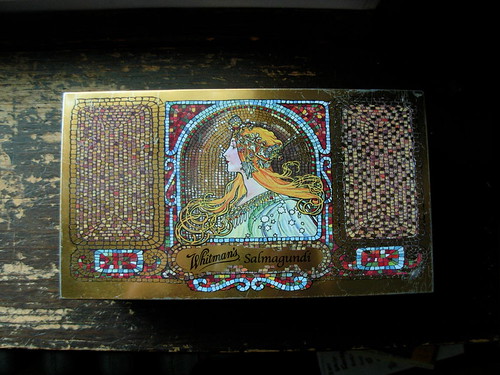
I checked a book out of the library about Alphonse Mucha(1860-1939), by Sarah Mucha, and realized that the Whitman Chocolates Tin I’ve been using as a cash box was a reproduction of one from 1923, based on a Mucha poster. When I saw this tin in a gift shop a few years ago, glimmering with a mosaic pattern, I had to buy it since I’m a mosaic artist, and of course I had to eat all the chocolates. The has other posters by Mucha, and I am intrigued by his use of mosaic backgrounds.
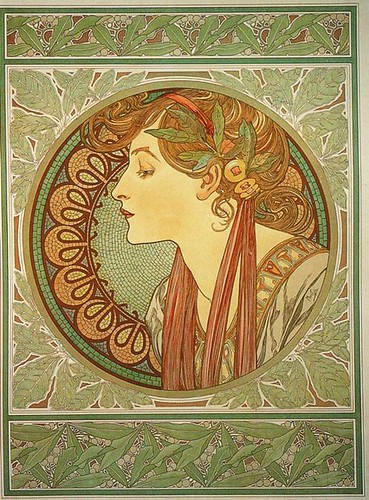
A facsimile of a mosaic, done as a print, and adding another delight for the eyes amongst his detailed botanicals, and he also sketched fanciful jewelry in his posters, which ultimately became incarnated as actual jewels, when George Fouquet was inspired by Mucha’s work. Fouquet also commissioned Mucha to design his jewelry shop in Paris in 1901. When Fouquet renovated, he was so attached to Mucha’s work that he had the shop dismantled and kept in storage, until the Carnavalet Museum reconstructed it and put it on display. What a treasure to discover in storage!

Mucha was from Czechoslovakia, but spent many years in Paris and US, working as an artist. He returned home to paint a series of huge paintings about the Czech people, his Slav Epic. I felt a connection with him when I saw that one of the paintings is of Jan Hus, who protested the selling of indulgences by the Catholic church, and was burned at the stake in the 15th Century. Hus’s followers went on to become the Moravian Church, and the denomination I grew up in. What I didn’t know was that Hus’s martyrdom triggered a Czech Rebellion, and the Hussite Wars, and is intertwined with the political history of the Moravian people as well as the Moravian church.
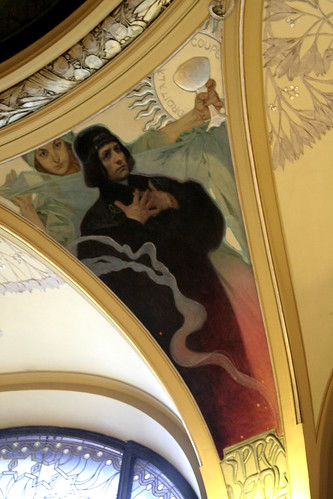
Another surprise to me in this book, was Mucha’s death in 1939, after the Nazi’s invaded Czechoslovakia, and he was arrested by the Gestapo and interrogated. He died shortly after his release. The Mucha Museum has a quote by the artist, which I resonate with, describing his work as a bridge between people. His Slav Epic was about bringing forth the stories of his people, and ultimately about hope.
The purpose of my work was never to destroy but always to create, to construct bridges, because we must live in the hope that humankind will draw together and that the better we understand each other the easier this will become.
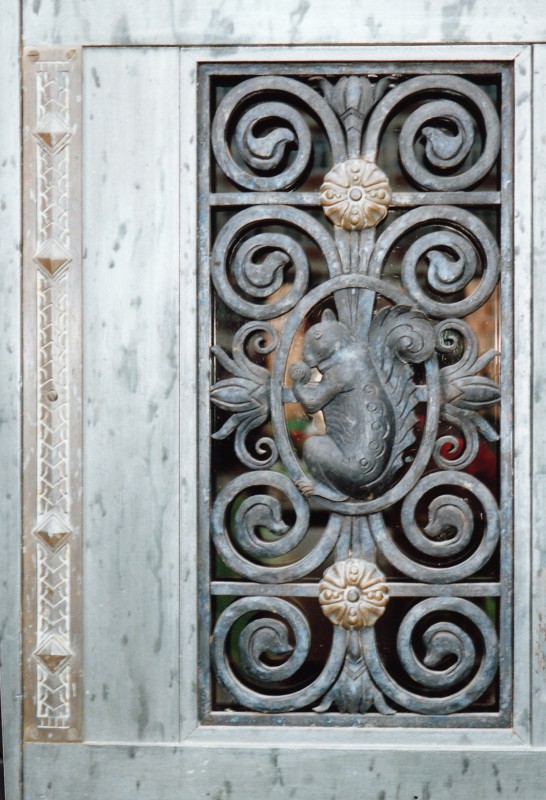
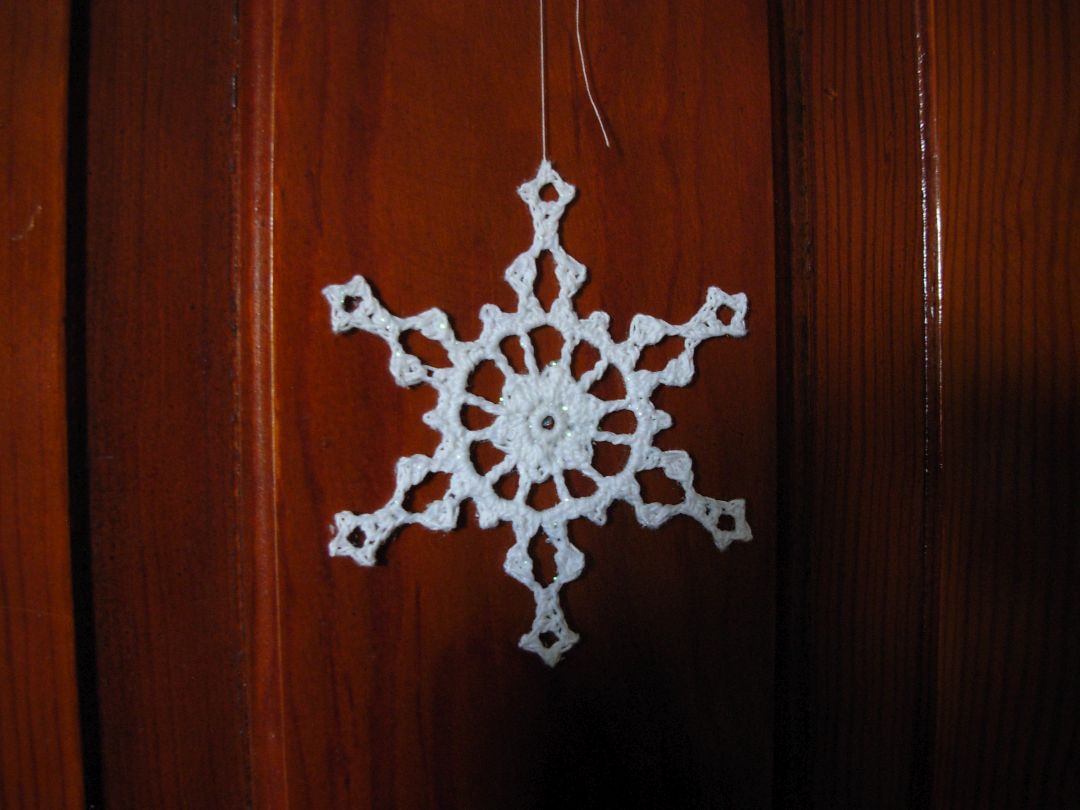
I enjoy the blog by Snowcatcher, as does Stratoz, and when he won a cool crocheted talisman from her, Iluak the Inuksuk, Snowcatcher included one her snowflakes for me in the package. It’s sparkly and exquisite, and I’ve hung it on the door inbetween my studio and Stratoz’s.
As she says in her Snowcatcher Etsy Shop:
Cycling Snowflake Designer Craves Vibrant Color
That’s me in six words! Fiber, photographic and digital art tickling creative desires, itching to escape my soul.
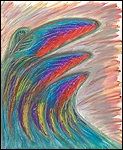
Talking with Suzanne Halstead reminded me of one of the most important things I learned from her, which was approaching art as a form of play. She has a Master of Arts in Education from Concordia University, with an emphasis on the development of creativity, play and informal learning environments. She says play is serious business for kids, one of the ways in which they learn about the world. Adults don’t allow this for themselves, often abandoning the act of making things, and thinking of art as “drawing something you can identify.” Suzanne describes another walk at Mensch Mill church camp, to the pond, and more drawing which began to feel more like “an exercise of skill rather than the passion of who I am,” and when releasing herself to the images on the page, vivid jagged spikes of red blossomed from the top of the watery blue green. This openness to the alive and growing edge of the soul is part of enlivens Suzanne’s pastels. She often uses “child’s pastels” which may not last forever, but she loves the color, and the beauty of playing with them.
There are ways in which realism can limit our ways of seeing, and Suzanne remarks on the transformation when drawing something in the world, something “real” but which she has a relationship with, a friend of the trees, not a scientific, botanically accurate relationship, but one of love. When she goes back into a drawing to explore it further, she is drawn to using her fingers, moving from the implement of a pastel crayon, to making a physical imprint on the page.
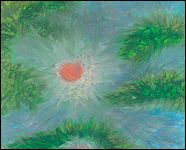
She suspects that this is a possibly unique process, and many of her colorings have the actual marks of her fingers as part of their composition. This series of pastels was a result of allowing herself to stay with one medium. Her love of different art media is irrepressible, and her studio is a treasure trove of supplies from printmaking, collage, and papermaking, but staying with the pastels was rewarding, seeing what she could learn from the medium.
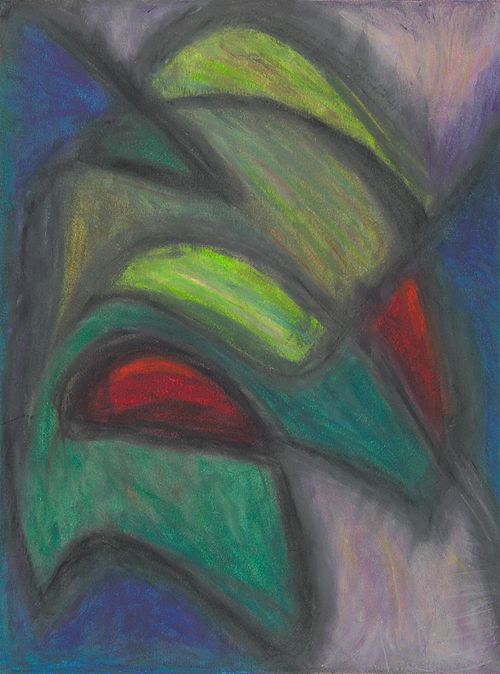
Reality is so much more interesting than one type of “realism” and the pastel on the left, Coming to Grips with Green, comes out of both using green, a color she is not usually attracted to, and a visitation of 17-year locusts. The red glows amidst its opposite on the color wheel, and vivifies the green. The spiritual aspect of working through pain, and being open to joy, is essential to Suzanne’s work, and she related how the book Drawing Nearer: Devotional Workbook of Creative Prayer came to be. While attending an annual conference for the United Church of Christ in 2007, she was talking with a pastor who was aking her about vocation, and vision in her life, and she mentioned her series of pastels. He suggested she talk to Rev. Wanda Schwandt, a writer, who was leading a workshop on different forms of prayer. Later in the evening, Suzanne went to the dessert table and reached for a slice of chocolate cheesecake, at the same time as another woman was reaching in, and looking over she saw the nametag said “Wanda Schwandt,” so out of 300 attendees at this conference, they had found each other!
Wanda invited Suzanne to help lead a Forms of Prayer Workshop that Spring, and after getting to know each other, then started doing several successful workshops together. It was a year or so later that an ‘Art & Prayer’ workshop they were offering together had no one sign up so they took that as a sign to start working on the book sign to start work together on a book combining Wanda’s writings on prayer, with Suzanne’s pastels. I was privileged to be part of a “tester group” in Lent of 2008, using the book as a Lenten devotional, with prayers to contemplate, and prompts for drawing in pastels, in order to explore images in the same playful, intuitive manner that has been a passion for Suzanne. I was in a desert place of the spirit at this time, but the possibility of drawing, using color, and not being expected to do something “perfectly” or “right” opened the potential to explore.
Interview with Suzanne Halstead Part 1: Seining the Soul to Bring Vision into Being
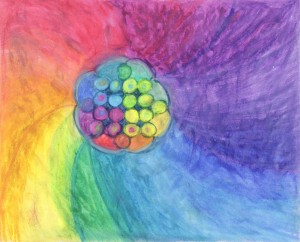
More Wordless Here.
Related:
Interview with Suzanne Halstead: Seining the Soul to Bring Vision into Being
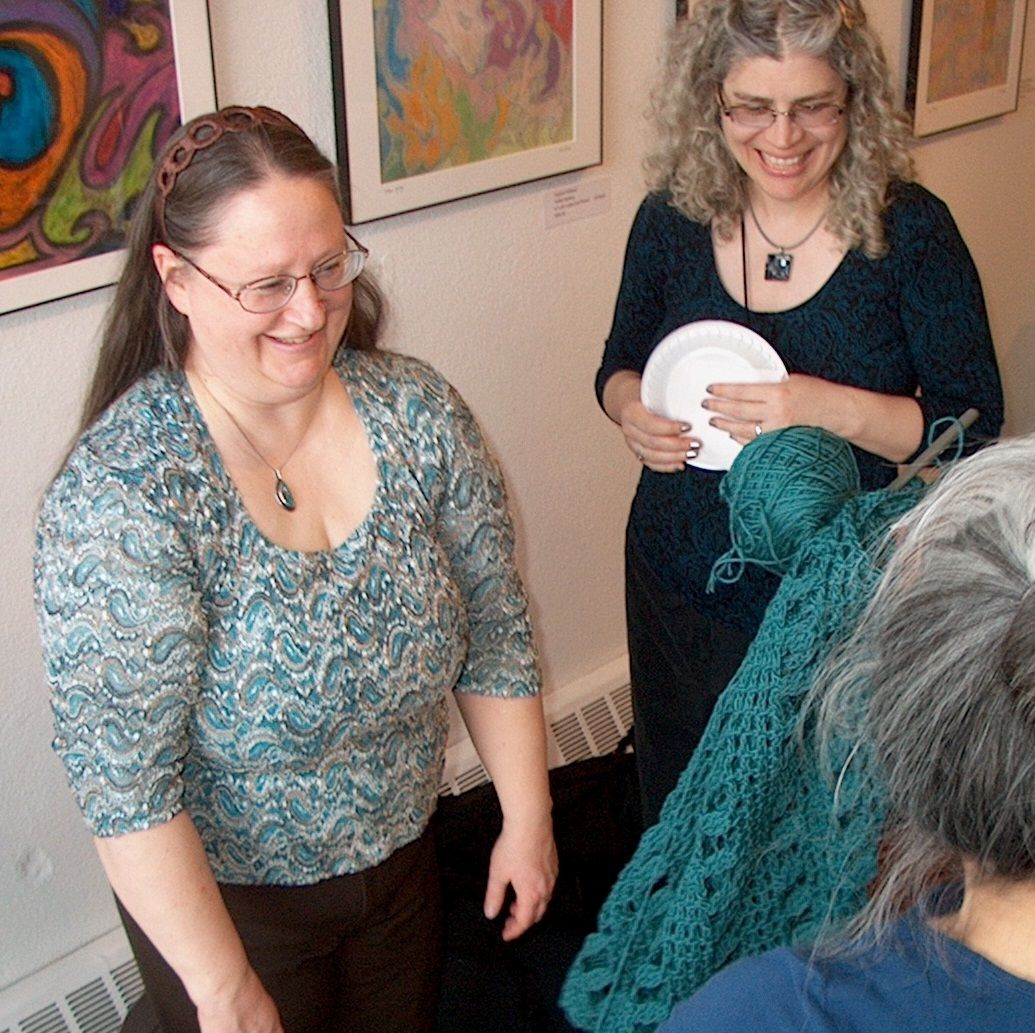
I had the pleasure of interviewing my friend, and fellow artist Suzanne Halstead about her Earth & Spirit Exhibition at Water Gallery in Lansdale, PA, March 18-April 24, 2011. I checked out the show and it was a delight seeing the oil pastel colorings, as Suzanne calls them, full size. I first witnessed them in a draft of her book, coauthored with Wanda Schwandt, Drawing Nearer: Devotional Workbook of Creative Prayer.
Suzanne uses a powerful metaphor for her artistic process, that of seining the soul. As a child at her grandparent’s ocean cottage, she would seine for sea creatures, to see what treasures emerged. Marine biologists also use seining to take a census of the sea, in hopes of preserving the ecosystem by seeing what is thriving and what is disappearing. This kind of curiosity is intrinsic to her art.
An art retreat in the summer of 2000, with Pat Allen, sowed the seed for this series of oil pastels. Allen, author of Art as a Way of Knowing, had participants fix large sheets of paper to the wall with masking tape, and then start using oil pastels in whatever gestures and colors each desired. Suzanne describes becoming enamored with the process “automatic drawing,” addressing the images in real time, as they come up on the paper. She describes her art as a total body experience, listening to music, using gestures of dance, an organic process where she feels most alive. Allen’s model of the Pardes Studio had three steps, Intention, Attention/Process, and Witness. Suzanne resonates with the image of archaeology, digging into the images, and witnessing them, working with our psyches, which are complex and layered.
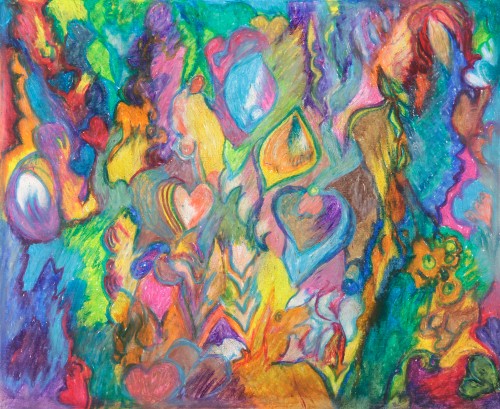
Then, after exploring with pastels over the next two years, with an incredible longing to keep the exploration going, this woman who loves the ocean, had a desert time of not making art, in the midst of moving to Mensch Mill church camp, where her husband Gary was called to be director, job angst, teaching workshops, and being in flux and transition. She relates a turning point that began when Gary gave her a gift of oil pastels for Christmas in 2003, which ultimately led to the piece above, Offering of Color.
She tells how couple months after Christmas, with the pastels still in their box, she went out for an early morning walk in the woods, and the words “Go use the pastels” came into her head, and heart. She went home and taped a piece of paper to the window in her back door. With the dawn light filtering through, as the sun rose, she was keenly aware of the pattern of the paper, the arrangement of the fibers, and it was calling the her. She used every color in the box but black and brown, and let the paper tell her what to do. Then 2 or 3 hours later, she peeled away the tape, which was a breakthrough experience for her. Suzanne describes how the actual taping of the paper, and then the taking the tape off is like the beginning and end of prayerful intention, and that tape acts as buffer for using the pastels with abandon, and as she peels the tape away, and a clean edge is revealed, she can witness again what she created. The works are not static, as she goes back in to rework images, not as a way to perfect them, but in response to what she is witnessing.
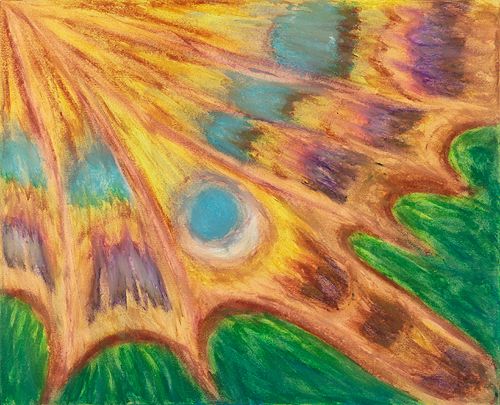
She worked in bursts of 5 or 6 days in a row, over the next year and a half to create the body of work in Earth & Spirit at Water Gallery. Suzanne ends her artist statement with the following, “While all art making is personal or ‘of the artist’, the images created in this body of work feel like a gift I am honored to be sharing them with you as a witness to these works.”
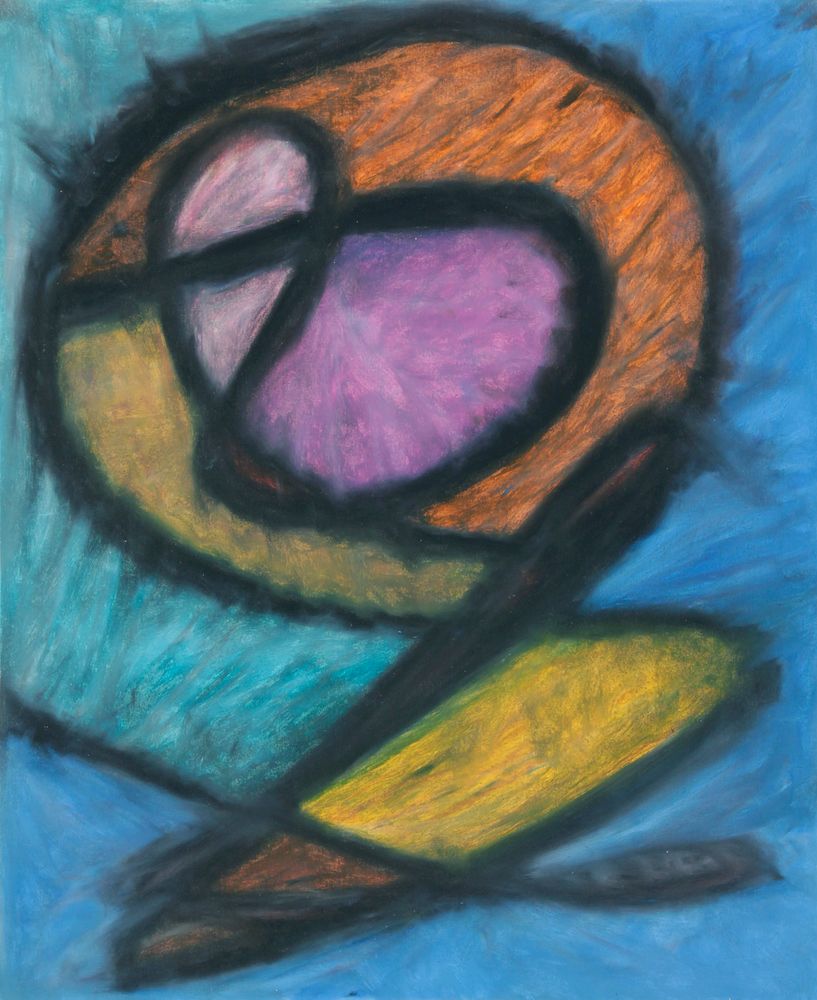
Interview with Suzanne Halstead Part 2: Release from Realism.
Drawing Nearer: Art, Prayer, Retreat
Doris Chan A cool friend of Suzanne’s, you can only see the back of her head in the photo at the top, plus some lovely blue yarn, and one of her original crochet creations.